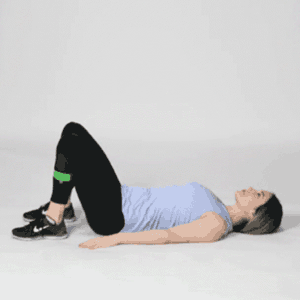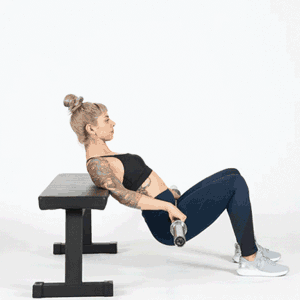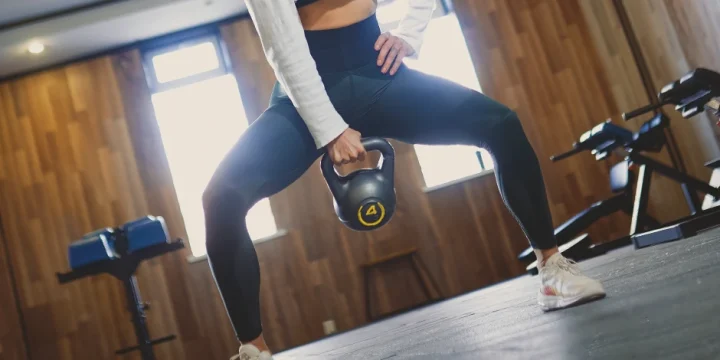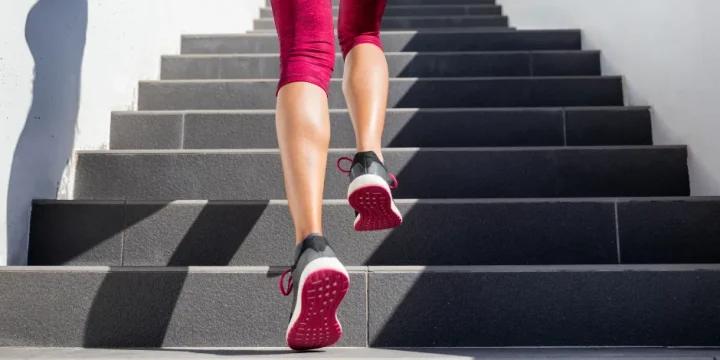When it comes to sculpting a firm and toned booty, it’s all about targeting the glutes to make them well-defined.
But exactly which of these glute exercises is better: the glute bridge or hip thrust?
Together with a group of my clients, I spent weeks testing these two exercises and spent hours examining their effects, to put an end to this debate once and for all.
Quick Summary
- The glute bridge primarily focuses on muscular endurance and can be performed using body weight, while the hip thrust emphasizes power and strength and often incorporates additional weights.
- Both exercises have their own benefits and can be incorporated into a workout routine based on individual goals and preferences.
- A PubMed study done with 10 resistance-trained men found that glute bridge is more effective than hip thrust in targeting and working the gluteus maximus muscle.
- In my personal opinion, integrating these exercises into your fitness regimen can lead to a stronger, more sculpted posterior and improved overall posture.
What Is the Difference Between the Glute Bridge and Hip Thrust?

The glute bridge and hip thrust are both exercises that target the glutes. The differences lie in the type of equipment required to perform the exercise and the benefits each one provides.
The most notable differences include:
Technicality:
- The glutes bridge relies on the individual’s own body weight and does not involve any additional weight or requirement.
- On the other hand, hip thrusts often utilize a barbell as a strength training exercise or a sturdy bench for pivoting the upper body.
Muscle Focus:
- Glute bridges are an efficient way to build muscular endurance and invoke glute activation.
- The hip thrust focuses more on developing power and strength in the glutes.
Mobility:
- The hip thrust covers a wider range of motion than the glute bridge, making it more difficult. The increased range of motion makes the hip thrust an excellent test of hip mobility.
Also Read: How to Do Hip Thrusts for Stronger Glutes
Which One Is Better - The Glute Bridge or Hip Thrust
Both the glute bridge and the hip thrust are effective exercises for developing lower body strength as well as a well-rounded butt.
Having walked the fitness journey myself, I can tell you that hey each have their unique advantages and disadvantages. Let's break it down.
Glute Bridge

Speaking from my own experience, I can't stress enough how crucial proper technique is for a successful glute bridge workout. It's the foundation of making this exercise work wonders for your posterior.
To perform a glute bridge exercise:
- Lie on your back with knees bent and feet flat on the ground. Open your knees hip-width apart, ensuring that your back is straight and arms resting by your sides.
- Contract your core muscles and slowly lift your butt and hips until your knees, hips, and shoulders form a perfect inclined straight line. Clench your glutes and hold the position for 3 to 8 seconds.
- Release your butt muscles and lower your hips in a slow, controlled motion.
- Perform three sets consisting of 10 reps each.
- Gives you a nicely shaped butt: Invokes glute activation and works the quadriceps and hamstrings, giving you a toned and well-rounded posterior.
- Improves body posture: People who spend their days sitting behind a desk tend to develop weak glutes and tight hips. The glutes bridge helps reverse these effects by strengthening the lower back, glutes, and hip flexors.
- Increases core strength: Glute bridge exercises exert strain on your mid-section, which helps strengthen one’s core stability.
- Helps manage lower back pain: By working the hamstrings and lower back muscles, the glutes bridge helps treat complications regarding lower back pain and the spine.
- Your body may eventually get used to the exercise and hit a training plateau
- Poor form can lead to lower back pain
Hip Thrust

Let me share some firsthand knowledge. When it comes to the hip thrust, it's all about the weights and a solid bench to achieve that picture-perfect hip extension.
According to a study in the National Library of Medicine, “The barbell hip thrust exercise and its variations are expected to demonstrate higher GMax excitation levels when compared to any exercise that includes simultaneous knee and hip flexion/extension movement, such as squats and their variations [1].” - Walter Krause Neto, Morphoquantitative Researcher
That makes the hip thrust the most intense when compared to other exercises of similar stature.
To perform a barbell hip thrust:
- Sit on the floor with the bench behind your back and your knees bent.
- Place a barbell on your lap, keeping your feet pressed flatly against the floor. To minimize discomfort, place a smooth pad between your hip crease and the barbell.
- Lean back and allow your shoulder blades to rest on the bench. Make sure your neck does not rest on the bench.
- Slowly lift the weight up by driving your hips towards the ceiling. Lift your hips as high as you can go until your back is straight and parallel to the floor.
- Squeeze your glutes and hold the position for about five seconds. Slowly lower your hips to the ground in a controlled motion.
- Repeat the exercise for 2 sets of 6 reps each.
- Tones butt and gluteal area: The hip thrust works the gluteus maximus and gluteus medius, resulting in a perfectly toned butt.
- Improved posture: Hip thrusts correct muscular imbalances that are responsible for poor posture.
- Improves athletic performance: Stimulating core muscles helps individuals develop explosive power for intense movements like sprinting and jumping.
- Increases the strength of the glute muscles: The range of motion and weights incorporated also work the core, hips, and quads, significantly increasing core muscle mass and glute strength.
- Prone to muscle cramping due to the short range of motion across multiple muscle groups
- Possibility of neck pain as a result of poor execution
Integration of Glute Bridges and Hip Thrusts into Various Exercise Regimens
Here's how to incorporate these exercises into various exercise regimens.
Yoga
Integrating glute bridges into yoga routines can enhance core stability and provide a foundation for more challenging poses. For instance, a modified glute bridge can be used as a preparatory pose for backbends or as a gentle alternative for those with lower back issues.
It strengthens the posterior chain, crucial for poses like Urdhva Dhanurasana (Wheel Pose) and Setu Bandhasana (Bridge Pose).
Pilates
In Pilates, the glute bridge can be modified to include leg lifts or arm movements, adding an extra challenge to the core and glute muscles.
This integration not only enhances lower body strength but also improves overall body alignment and balance, which are core principles of Pilates.
Strength Training
In strength training, the hip thrust comes into its own. It's a powerful exercise for building glute and hamstring strength and can be easily incorporated into lower body routines.
By varying the weight and reps, it can be adapted for both endurance and strength-focused workouts. The hip thrust is particularly beneficial for athletes looking to improve their explosive power in sports like sprinting or jumping.
Home Workouts
For those working out at home with limited equipment, both glute bridges and hip thrusts are invaluable. They can be performed with body weight, or with added resistance using bands, dumbbells, or even household items.
These exercises can be integrated into circuit training, HIIT sessions, or as part of a targeted lower-body workout.
Rehabilitation and Injury Prevention
Both exercises are also excellent for rehabilitation and injury prevention. They strengthen the muscles around the hips and lower back, which are crucial for maintaining good posture and reducing the risk of injuries.
FAQs
Who Should Not Do Glute Bridges and Hip Thrusts?
Individuals who should avoid the glutes bridge and hip thrust include women in their final term of pregnancy and patients who are injured or recovering from back, hip, or abdomen surgery. Other than the mentioned exceptions, the exercises are considered safe for everyone.
Are Glute Bridges More Effective Than Squats?
Glute bridges are generally more effective as they target all three gluteal muscles (maximus, medius, and minimus), whereas squats target only the maximus. Bridges are also safer as they do not exert any stress on your lower back, allowing individuals that have hip or knee injuries to still work their glutes.
Do Glute Bridges Make Your Hips Bigger?
Over time, performing the glute bridge will make your hips bigger. The exercise targets hip flexors and hip extension muscles, which are primarily responsible for increasing the strength and mass of the hips. That results in a well-rounded booty that’s toned and firm.
References:
- https://www.ncbi.nlm.nih.gov/pmc/articles/PMC7039033/
About The Author
You May Also Like






